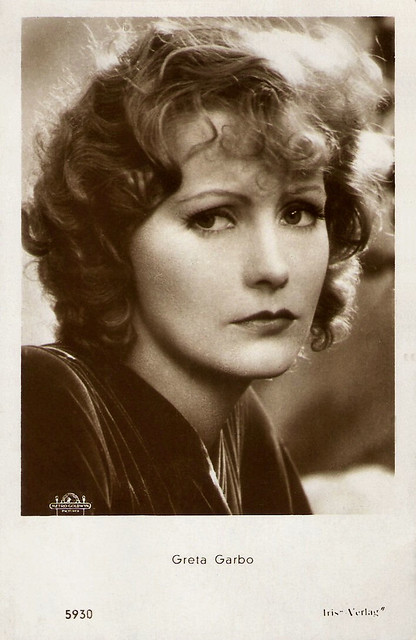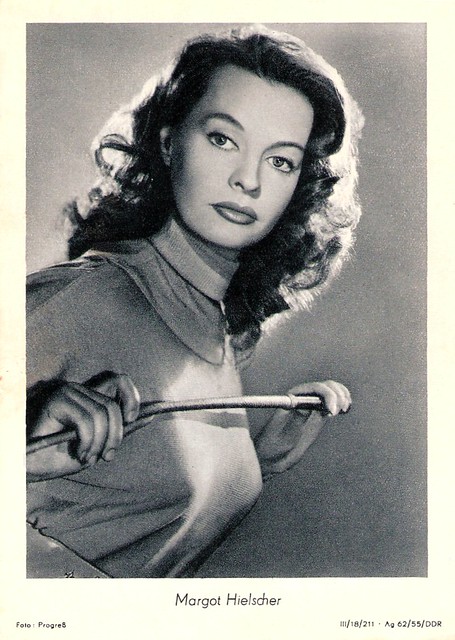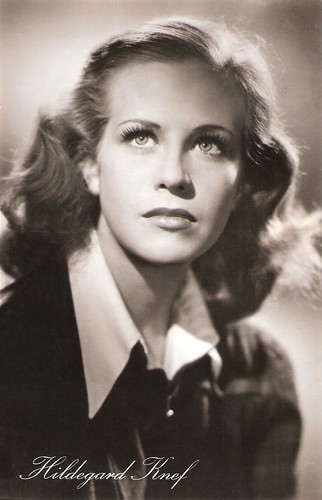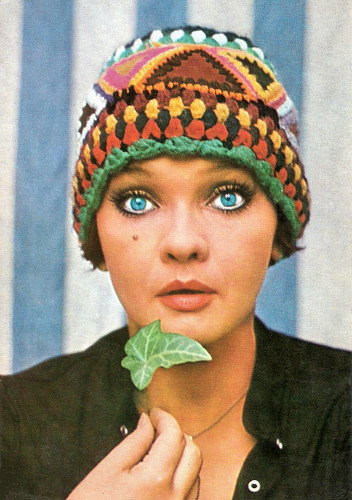British Academy Award-winning actor
David Niven (1910-1983) impersonated the archetypal English gentleman, witty, naturally charming, immaculate in dress and behaviour, but he also had a dash of light-hearted sexual roguishness. He is probably best known for his role as the punctuality-obsessed adventurer Phileas Fogg in
Around the World in 80 Days (1956).
Spanish collector's card by Cifesa / I.G. Viladot, Barcelona.
British postcard in the Film Partners Series, London, no. PC 211. Photo: R.K.O. Radio. Publicity still for
Bachelor Mother (Garson Kanin, 1939) with
Ginger Rogers.
Whisky Sales and Horse Rodeo Promotion
James David Graham Niven was born in London, England. He was the son of British Army captain
William Edward Graham Niven and the French/British
Henrietta Julia de Gacher. He was named David for his birth on St. David's Day.
His father was killed during the Gallipoli Campaign in 1915 and his mother remarried a politician,
Sir Thomas Comyn-Platt. David was shipped off to a succession of boarding schools by his stepfather, who didn't care much for the boy. Young Niven hated the experience and was a poor student.
He trained at the Royal Military College, Sandhurst, which gave him the officer and gentleman bearing that was to be his trademark. Niven relocated to New York, where he began an unsuccessful career in whisky sales and horse rodeo promotion in Atlantic City.
After subsequent detours to Bermuda and Cuba, he finally arrived in Hollywood. His first work was as an extra. He then found himself an agent,
Bill Hawks, and was signed up for a non-speaking part in
Mutiny On The Bounty (Frank Lloyd, 1935).
He accepted a contract with independent film producer
Samuel Goldwyn. After several secondary roles for Goldwyn, he was loaned out for a lead role as Bertie Wooster in the 20th Century Fox feature
Thank You, Jeeves (Arthur Greville Collins, 1936).
Niven joined what became known as the Hollywood Raj, a group of British actors in Hollywood. Other members of the group included
Boris Karloff,
Stan Laurel,
Basil Rathbone,
Ronald Colman and
C. Aubrey Smith.
One of his first major roles was in
The Charge of the Light Brigade (Michael Curtiz, 1936) starring
Errol Flynn, with whom he briefly lived. A year later he starred as Capt. Fritz von Tarlenheim in
The Prisoner of Zenda (John Cromwell, William S. Van Dyke, 1937).
Not wanting to be typecast as a 'swashbuckler' as Flynn had been, Niven made films such as the comedies
Dinner at the Ritz (Harold Schuster, 1937) which was filmed in London, and
Bachelor Mother (Garson Kanin, 1939) with
Ginger Rogers.
Niven’s first major success was
The Dawn Patrol (Edmund Goulding, 1938) with
Errol Flynn. He also appeared in the very successful
Wuthering Heights (William Wyler, 1939) starring
Merle Oberon and
Laurence Olivier.
After suspension by Samuel Goldwyn over a salary dispute, David was back to star in the Western
The Real Glory (Henry Hathaway, 1939) with
Gary Cooper, and as a gentleman thief in
Raffles (Sam Wood, William Wyler, 1940), a remake of the
Ronald Colman original.
Dutch postcard by ´t Sticht, Utrecht, no. 3085. Photo R.K.O. Radio Films.
Dutch postcard by HEMO. Photo: Eagle Lion.
British card in the Picturegoer Series, London, no. 1376. Photo: Samuel Goldwyn.
A Matter of Life and Death
After the United Kingdom declared war in 1939, David Niven returned to England and joined the British Army. Niven would take part in the Normandy landings, arriving several days after D-Day. He was given leave to appear in the propaganda films
The First of the Few (
Leslie Howard, 1942) and
The Way Ahead (Carol Reed, 1944).
On his discharge as a colonel he played the poet-airman caught between life and death in
A Matter of Life and Death (Michael Powell, Emeric Pressburger, 1946), one of his most effective roles.
On his return to Hollywood after the war, he was made a Legionnaire of the Legion of Merit, the highest American order that can be earned by a foreigner.
Niven found that he still wasn't getting any important roles; despite ten years experience, he was considered too 'lightweight' to be a major name. His films included
The Perfect Marriage (Lewis Allen, 1946) with
Loretta Young,
Magnificent Doll (Frank Borzage, 1946) opposite
Ginger Rogers, and
The Bishop's Wife (Henry Koster, 1947) with
Cary Grant.
After his Goldwyn contract ended in 1949, Niven marked time with inconsequential films including the British production
The Elusive Pimpernel (Michael Powell, Emeric Pressburger, 1950).
In 1952 he joined
Dick Powell,
Charles Boyer, and
Ida Lupino to form Four Star, a television production company. Niven was finally able to choose strong dramatic roles for himself, becoming one of TV's first and most prolific stars, although his public still preferred him as a light comedian.
The actor's film career also took an upswing in the 1950s with starring performances in the controversial
The Moon Is Blue (Otto Preminger, 1953) - a harmless concoction which was denied a Production Code seal because the word 'virgin' was bandied about; and the mammoth
Around the World in 80 Days (Michael Anderson, 1956), in which Niven played his most famous role, erudite 19th century globetrotter Phileas Fogg.
He won a Best Actor Oscar for his performance as the fraudulent major in
Separate Tables (Delbert Mann, 1958), in which he co-starred with
Deborah Kerr and
Rita Hayworth.
During the 1960s he appeared as a compassionate explosives expert in the blockbuster
The Guns of Navarone (J. Lee Thompson, 1961), and the sophisticated thief Sir Charles Litton opposite
Peter Sellers in
The Pink Panther (Blake Edwards, 1963).
Ian Fleming recommended him for the role of James Bond for
Dr. No (Terence Young, 1962), but producer
Albert R. Broccoli thought that Niven was too old.
In 1967, Niven finally starred as Sir James Bond in the satire
Casino Royale (John Huston a.o., 1967). He also starred in the French comedy
Le Cerveau/The Brain (Gerard Oury, 1969).
British postcard in the People series by Show Parade Picture Service, London, no. P 1057. Photo: J. Arthur Rank Organisation Ltd. Publicity still for
Wuthering Heights (William Wyler, 1939).
German postcard by Ufa, Berlin, no. FK 4248. Retail price: 0,25 Pfg. Photo: Columbia Film. Publicity still for
Bonjour Tristesse (Otto Preminger, 1958).
Postcard. Photo:
Alberto Sordi and
David Niven in
The Best of Enemies (Guy Hamilton, 1961). Collection: Pierre sur le Ciel.
Lou Gehrig's Disease
David Niven was married twice. First to
Primula Susan Rollo, the aristocratic daughter of a British lawyer. In 1946, she died at age 28 of injuries from an accidental fall in the home of
Tyrone Power. While playing hide and seek, she walked through a door believing it led to a closet. Instead, it led to a stone staircase to the basement. Niven later claimed to have been so grief stricken that he thought for a while that he'd gone mad.
In 1948, Niven met
Hjördis Paulina Tersmeden, a divorced Swedish fashion model and frustrated actress. They married six weeks later. The actor's rebound second marriage was as unhappy as his previous marriage had been happy. He was the father, with Primula Rollo, of
David Niven Jr. and
Jamie Niven; and the father, with Hjordis, of two adopted daughters,
Kristina (adopted 1960) and
Fiona (adopted 1962).
Late in life, he gained critical acclaim for his memoirs of his boyhood and acting career,
The Moon's a Balloon (1971) and
Bring On the Empty Horses (1975).
The 1970s saw Niven appear in two very different star-studded ensemble murder mysteries; the blackly comical
Murder by Death (Robert Moore, 1976) and the
Agatha Christie adaptation
Death on the Nile (John Guillermin, 1978).
In 1980, Niven began experiencing fatigue, muscle weakness, and a warble in his voice. A 1981 TV talkshow interview alarmed family and friends; viewers wondered if Niven had either been drinking or suffered a stroke. He received the diagnosis of motor neurone disease (Lou Gehrig's Disease) later that year.
His hosting duties of the American Film Institute tribute to
Fred Astaire marked his final appearance in Hollywood. He shot two cameos as Sir Charles Litton for his final films,
Trail of the Pink Panther (Blake Edwards, 1982) and
Curse of the Pink Panther (Blake Edwards, 1983) - his voice by this time was so weak, he was dubbed by
Rich Little.
David Niven died at home in Château-d'Oex, Switzerland in 1983 at age 73.
Scene from
A Matter of Life and Death (1946). Source: Mutikonka (YouTube).
Trailer
Around the World in 80 Days (1956). Source: Old School Trailers (YouTube).
Original trailer of
The Pink Panther (1963). Source: gocha 07 (YouTube).
Sources:
Hal Erickson (AllMovie),
Wikipedia,
Britmovie, and
IMDb.

































































































